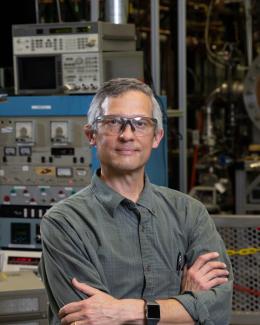Abstract
National Spherical Torus Experiment (NSTX) is a spherical tokamak (ST) that operates with n(e) up to 10(20) m(-3) and B-T less than 0.6 T, cutting off low harmonic electron cyclotron (EC) emission widely used for T-e measurements on conventional aspect ratio tokamaks. The electron Bernstein wave (EBW) can propagate in ST plasmas and is emitted at EC harmonics. These properties suggest thermal EBW emission (EBE) may be used for local T-e measurements in the ST. Practically, a robust T-e(R,t) EBE diagnostic requires EBW transmission efficiencies of >90% for a wide range of plasma conditions. EBW emission and coupling physics were studied on NSTX with an obliquely viewing EBW to O-mode (B-X-O) diagnostic with two remotely steered antennas, coupled to absolutely calibrated radiometers. While T-e(R,t) measurements with EBW emission on NSTX were possible, they were challenged by several issues. Rapid fluctuations in edge n(e) scale length resulted in >20% changes in the low harmonic B-X-O transmission efficiency. Also, B-X-O transmission efficiency during H modes was observed to decay by a factor of 5-10 to less than a few percent. The B-X-O transmission behavior during H modes was reproduced by EBE simulations that predict that EBW collisional damping can significantly reduce emission when T-e < 30 eV inside the B-X-O mode conversion (MC) layer. Initial edge lithium conditioning experiments during H modes have shown that evaporated lithium can increase T-e inside the B-X-O MC layer, significantly increasing B-X-O transmission.


